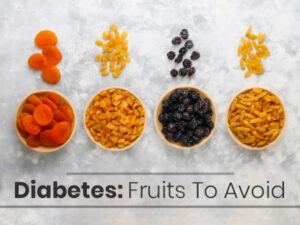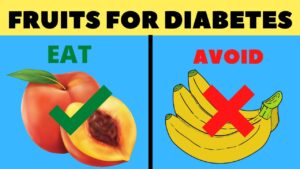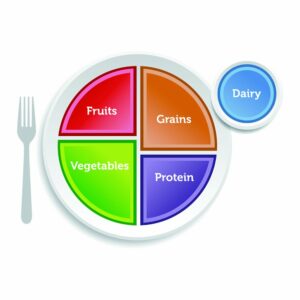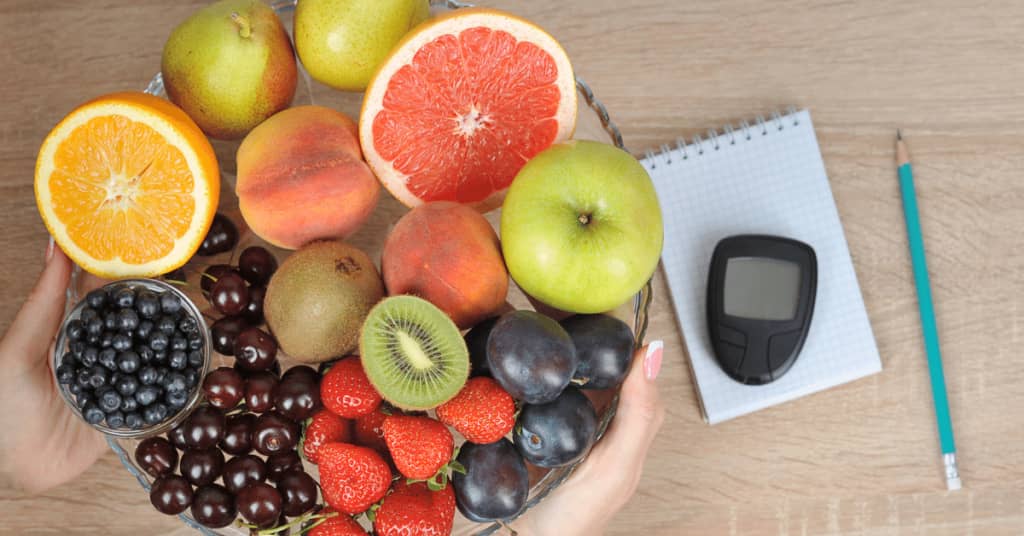Contents
Guide to fruits for Diabetics

You might have heard that you can’t eat fruit if you have diabetes. The fruit has carbohydrates and a form of natural sugar called fructose, which can raise your blood sugar levels. But it can still be part of your meal plan. But certain factors such as glycemic index and glycemic load need to be considered when selecting fruits to eat. So, we prepared a guide to fruits for diabetics.
Eating fruit may lower your risk of heart disease, cancer, and stroke and boost your overall health. That’s important because diabetes is linked to a higher risk of heart disease and other problems. Some fruits even help in reversing diabetes. It’s full of vitamins, minerals, and powerful plant compounds called phytochemicals. Many fruits are high in fiber, too. Fiber slows digestion, helping to prevent blood sugar spikes. It also makes you feel fuller, which can help you keep a healthy weight.
Which fruits should you eat and in what quantity?

You can eat most of the fruits as long as they don’t increase your daily calorie amount. Make sure they are part of your daily diet, do not add on extra calories. you can eat almost every fruit, it’s just that some fruits have high carbs and some have low carbs.
And there are fruits that have a medium amount of carbs so you can eat them in moderate amounts.
In a nutshell, you should prefer low carbs containing fruits. And fruits with a high carb amount should be avoided. In this guide to fruits for diabetics, the fruits are categorized according to their sugar content-
Fruits with high amounts of sugar

- Bananas
- Pineapple
- Apple
- Grapes
- Lychee
- Pomegranate
- Mangoes
As these have high amounts of sugar, you should avoid eating them.
Fruits that are medium in sugar
You can eat them but in fewer amounts are:
- Kiwi
- Jamun
- Papaya
- Peach
- Plums
- Watermelon
For example-
You can eat jamuns in little numbers. 3-4 pieces of watermelon, papaya. and some slices of kiwi, peaches, and plums.
Whenever you eat high sugar fruits, try to eat some high-fat food like Dahi, cheese, or avocado along with them. Fat and protein will help you to keep your blood sugar level normal.
Fruits with less sugar

- Blueberries
- Blackberries
- Strawberries
- Mulberries
- Pears
- star fruit
- Raspberries
- Mosambi
- Avocado
- Palm fruit.
You can eat these fruits as much as you want at any time. These will not spike your blood sugar levels, as they are high in fibres and low in sugar.
Health benefits of different fruits
Let’s now talk about the health benefits of eating different fruits:
Avocado
Avocado has a GI as low as 15, and is naturally low in sugar, with just 1 gram of sugar per fruit, avocados are very healthy for diabetics. They also lower the level of bad cholesterols in the body that helps in protecting the heart. one medium-sized avocado daily is good for diabetics.
Berries
These are tasty when eaten raw and can also be cooked into a compote to spoon into oatmeal or meat. Berries like blueberry, raspberry, and strawberry are all healthy for diabetics. They have a low GI and are full of antioxidants, fibres, and vitamin C. These also have less sugar so you can eat them with oatmeal, curd, salad, or smoothies.
Guava
Guava has a high amount of vitamin c and potassium which are helpful in maintaining blood sugar levels.
Some studies say that Those who have prediabetes can help prevent it by drinking guava leaf tea. You can make guava leaf tea by letting the leaves dry and crush them, then boil these leaves in hot water. You can drink this tea daily after staining it.
Peaches
Peaches have a GI of 40. This fruit has relatively low carbohydrates and is included in low GI fruits. Peaches are full of vitamin C and potassium that are healthy for diabetics. This fruit can be included in the diet of a diabetes patient, but it is advised to eat in moderation.
Black plums
Plums have a GI of 24, which is quite low. can help a lot in controlling blood sugar.
The fruit helps control the conversion of carbohydrates into blood sugar. The excessive thirst and frequent urination problems common among people with diabetes can also be controlled by this fruit.
Kiwi
Kiwi is a medium GI fruit. It ranges from 50-58. A positive correlation has been found between kiwi consumption and lowering blood sugar levels. kiwi is high in fiber and low in carbohydrates, which aids in controlling blood sugar levels and lowering cholesterol. Eating one kiwi daily will help control blood glucose levels and provide a healthy alternative to snacking on high-fat or high-sugar foods. But remember to eat it in moderation.
Papaya
The GI of papaya is 60. The possible health benefits of consuming papaya include a reduced risk of heart disease, diabetes, cancer, aiding in digestion, improving blood glucose control in people with diabetes, lowering blood pressure, and improving wound healing.
One small papaya provides about 3 grams of fiber, which is equivalent to just 17 grams of carbohydrates. Diabetics should eat it in fewer amounts.
Muskmelon
Melons like watermelon, honeydew melon, muskmelon have GI levels of 65 to 76.
A diabetic can eat these fruits in moderation like one slice, so it won’t affect blood sugar level. However, these melons have mineral vitamins that help in keeping the heart healthy. They also reduce the risk of cancers. The fibers present in these melons protect digestive health. And in watermelon, the high quantity of water prevents dehydration.
How Do Fruits Benefit Diabetics?

Eating enough fiber plays an important role in managing diabetes. A diet high in soluble fiber can slow the absorption of sugar and control its levels in the blood. Many fruits are high in fiber, especially those with the skin or pulp included.
Many fruits are filling because of their high fiber and water content. Plus you will get many nutrients including vitamins and minerals from the fruits. Therefore, fruits are beneficial for diabetics.
Like how we discussed earlier the benefits of fruits on health and blood sugar. Let me tell you some facts about fruits related to diabetics health –
- Fruits contain some nutrients that are not found in any other foods. So eating fruits can be beneficial for our health.
- Most of the fruits are fat-free and have a high amount of good nutrients which helps in regulating blood sugar levels.
- Fruit also helps in managing weight for diabetics.
- Fresh fruits are more beneficial than processed fruits.
Diabetics should avoid fruit juices as juices lose fibres in the process and act as a sugar solution. Juices can raise blood sugar levels rapidly. A diabetic should eat fruit as a whole.
When and how you should eat fruits?

Try to eat one fruit at a time. Always remember quantity is the key. You can include fruits in your daily routine in several ways like-
- You can add one fruit to your vegetable smoothie drink or you can always eat them with some curd or paneer.
- Or you can make a fruit salad. But remember to add some fat or protein food like cheese, butter or nuts.
- Some whole fruits like pears, mosambi, and avocado can be eaten as a whole.
However, You should always remember to avoid fruit juices as the fibres in juices are lost, so sugar level increases and it can spike up your blood sugar. While planning your diet, remember this guide to fruits for diabetics, and include what suits you the best.
A Word From MantraCare
Do you want to get rid of diabetes? Join our online diabetes consultation program and reverse your Diabetes naturally through lifestyle changes such as a Personalized Diet plan, Exercise, dieticians, and health coaches.


